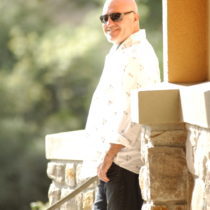Landscape Architecture for Landscape Architects › Forums › DETAILS & MATERIALS › ARTIFICIAL ROCK AS A DESIGN MEDIUM (Article 2 of 10)
- This topic has 0 replies, 1 voice, and was last updated 15 years, 5 months ago by
 Matthew E Wilson.
Matthew E Wilson.
-
AuthorPosts
-
November 10, 2008 at 4:54 pm #176120
 Matthew E WilsonParticipant
Matthew E WilsonParticipantHistory of artificial rock (article #2 of 10)
The history of artificial rock started over 100 years ago with origins in Europe, specifically in Germany for animal exhibits. These early examples were very crude and nothing more than solid mounds of dumped concrete. They did however fulfill the design parameters, which was to display hoofed stock (hoofed stock: antelope, gazelle, etc.) on a raised terrain.
With modern times came advanced technology such as shot-crete and other pneumatically placed mortars or gunite. These pneumatically applied structural materials created the ability to go vertical with greater structural integrity and without the necessity of rigid forms or a solid mass of material. This freed the designer to more naturally replicate rock and rock outcroppings in to the design for displaying animals in captive environments.
A framework of rebar (rebar: reinforced steel bars 3/8” – 3/4” diameter) outlined the designer’s concept for an exhibit. The rebar was bent in a cross hatch grid mimicking natural rock shapes and thus began the transformation of the exhibit space. Next a suspended sheet of burlap, stucco lath, masonite, cardboard, or even used carpet was positioned from inside the rebar armature. Once secure the pneumatically applied cementious material was gunned over the top of the rebar structure to form a permanent structure without the cumbersome weight and mass of solid concrete.
Even today, many fabricators stop at this point of expertise by simply carving (carving: utilizing a fillet knife to cut fractures and seismic breaks to the still moist concrete surface), or texturing this crudely applied concrete and then coloring their work. A greater degree of detail may be achieved with the next process of applying a secondary coat of plaster (plaster: sand, cement, and water mixture) over this previously hardened concrete structure. The plaster material, having a composite of much finer sand and no rock, can then be textured to a greater degree of believability.
The most believable reproduction is that of cast rock (cast: molds taken from real rock are coated with g.f.r.c.: glass fiber reinforced concrete and a casting is allowed to harden and later transported to the construction site and suspended over a metal armature). Cast rock came about with Walt Disney’s group looking for a faster more believable way to make reproductions. Disney had befriended BF Goodrich at some point and acquired the process of utilizing natural latex rubber to create molds of virtually anything. In the early stages of development molds were coated with up to three inches of concrete because the technology did not exist to cast anything thinner without the piece cracking upon demolding. There had to be a better way and time and ingenuity prevailed.
History of G.F.R.C. (glass fiber reinforced concrete)
Glass fiber reinforced concrete has been in existence for over 30 years. Its origins are found in commercial high rise developments in England. Architects needed a strong, yet lightweight skin to cover their steel beams structures. G.F.R.C. was the perfect solution because of its lightweight, 3 to 9 pounds per square foot, depending on thickness, and its incredible strength, 7 – 9,000 psi compressive @ ½” thickness, making it the ideal solution. Today there is more than 5,000,000 square feet produced annually. Many of today’s steel beam structures are covered in G.F.R.C. cast into all types of architectural shapes, textures, & colors.
The same lightweight G.F.R.C. shell proves useful in the construction of large artificial boulders and cliff faces as well. Most G.F.R.C. rock panels can be shipped virtually anywhere in the world and handled with human strength thus eliminating the necessity of expensive and cumbersome crane rentals.
Next article
Types of artificial rockQuote
“No matter what you do there will always be critics”
-
AuthorPosts
- You must be logged in to reply to this topic.

